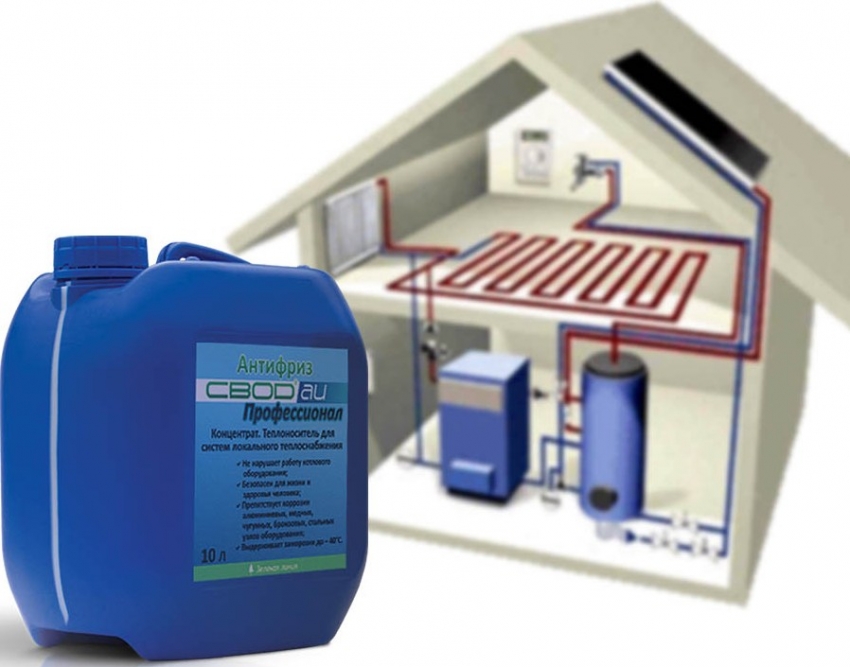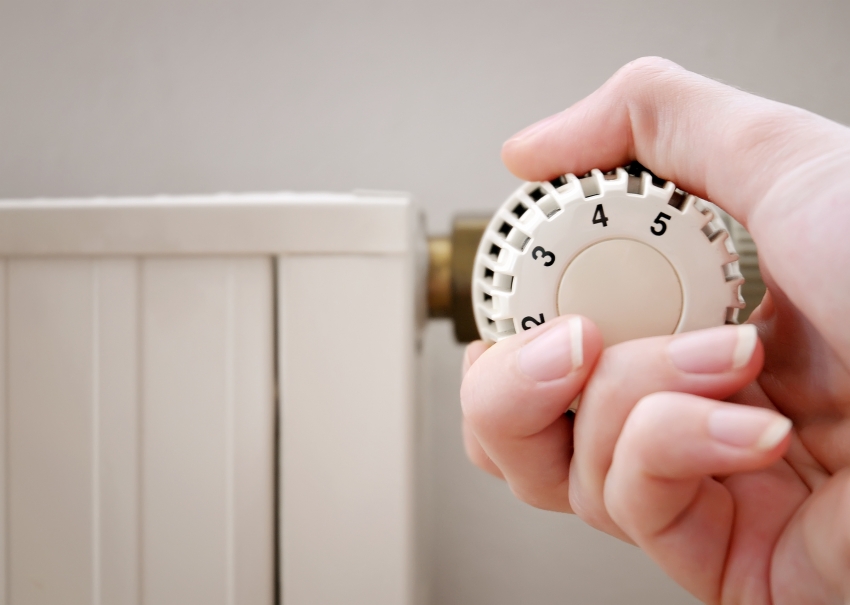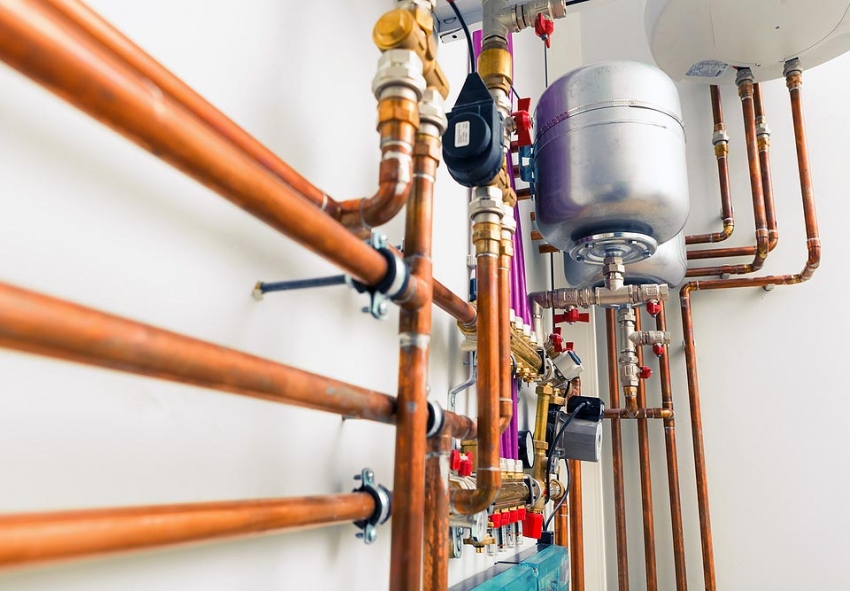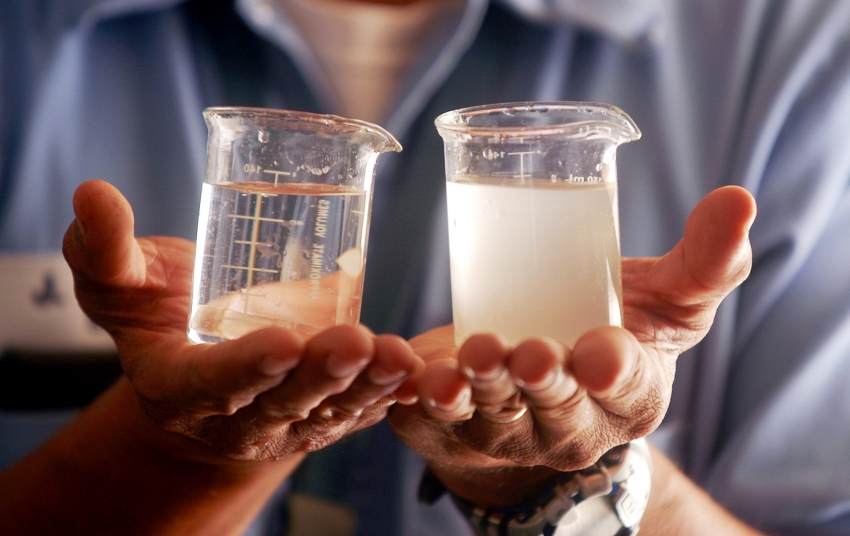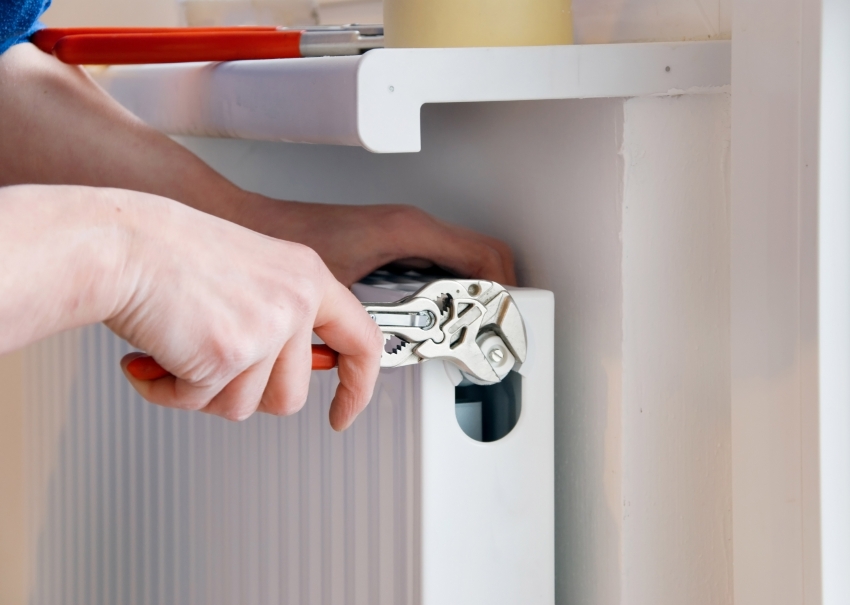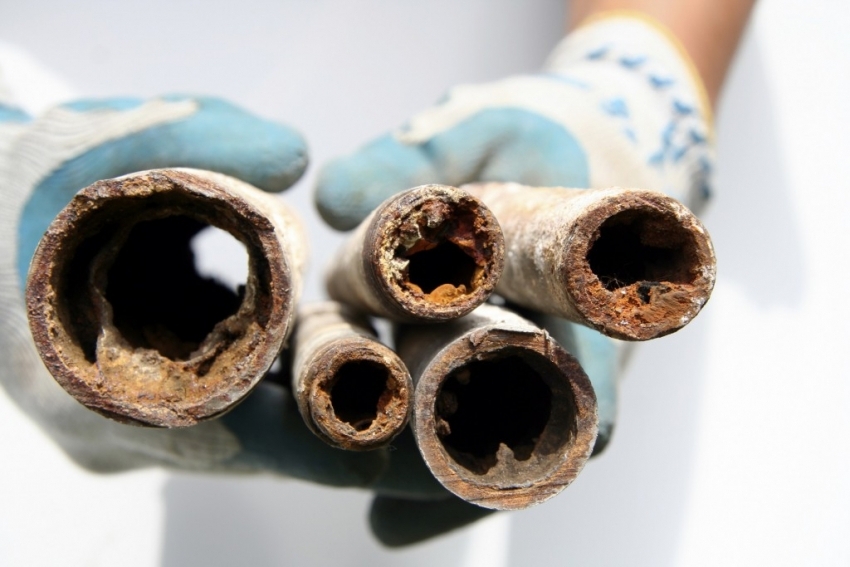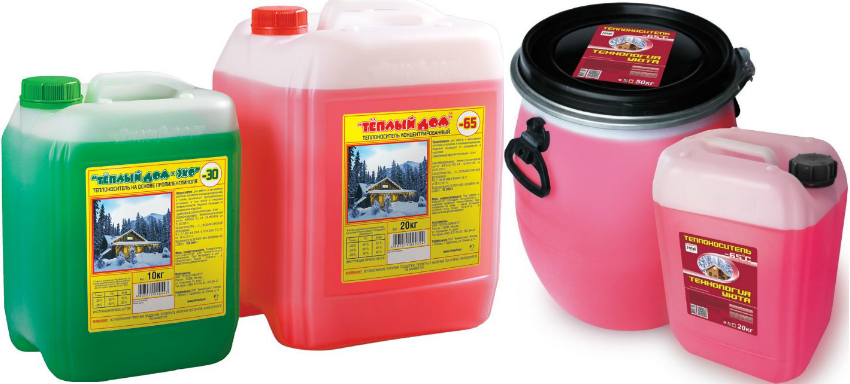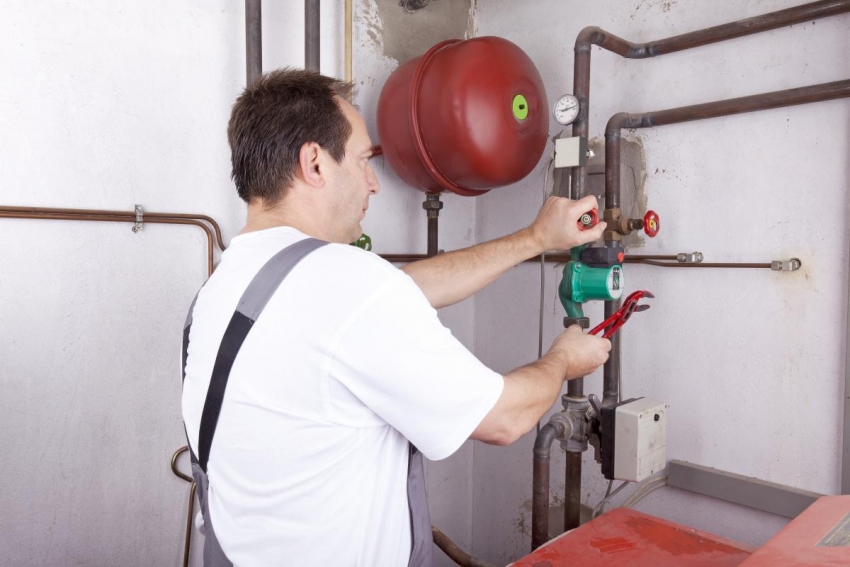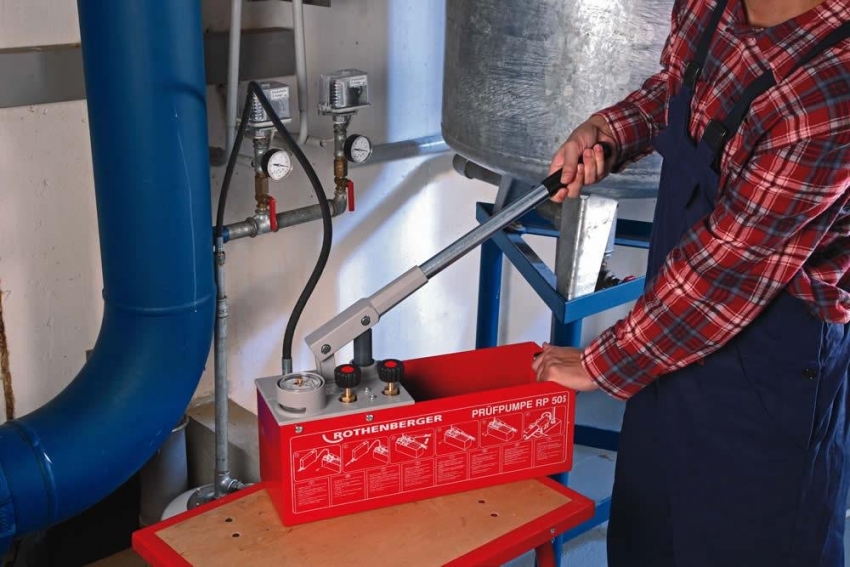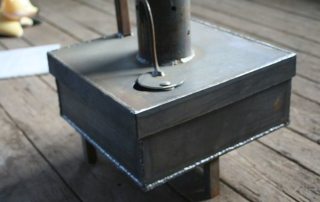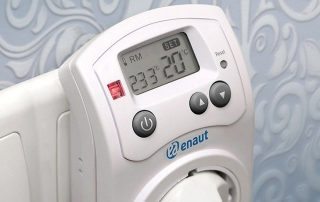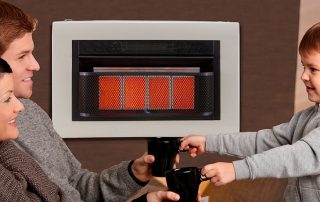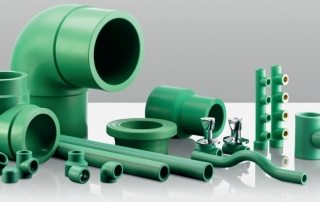The harsh climate of our country obliges every owner of a country house to think about how to keep warm in the cold season. Setting up an efficient and economical system is not an easy task. However, if you choose the right coolant for the heating system of a country house and take into account all the recommendations of specialists, the result can exceed all expectations. Consider what a coolant is and what you need to pay attention to in the selection process in the first place.

The choice of a high-quality heat carrier is a guarantee of a comfortable temperature in the house, as well as a long service life of the heating system
Content
- 1 Heat carrier for the heating system of a country house: what is it?
- 2 What coolant is best used in the heating system: features of using water
- 3 What are antifreezes, which one is better to choose, features of their use
- 4 What coolant for heating systems to buy: the most popular brands on the market
- 5 Filling the heating system with antifreeze: features of use
- 6 Filling the heating system with a coolant with your own hands: rules and recommendations
- 7 Rules for commercial metering of thermal energy of a heat carrier: what is it?
Heat carrier for the heating system of a country house: what is it?
A coolant in a heating system is a liquid that transfers heat to radiators from a source, that is, a boiler. Usually, water is used for this purpose, as well as special antifreezes (liquids that can not react even to very low temperatures and do not freeze).
In order to buy a coolant for heating systems, which will ideally fit the parameters of your home, you need to pay attention to the following criteria:
- safety. In the heating system, like any other, malfunctions and leaks may periodically occur. The safety of the coolant will be of great importance in this case, since the person fixing the breakdown will have to come into contact with the liquid. And for the owners, unnecessary risks are useless;
- it is equally important that the coolant is safe for the heating system, since any failure of it entails significant financial costs;
- efficiency is another criterion that determines the coolant. Some fluids handle heat transfer better, while others do worse. And you need to pay attention to this in the selection process;
- the length of the service life can be different, and it is advisable to choose a liquid that will last long enough.
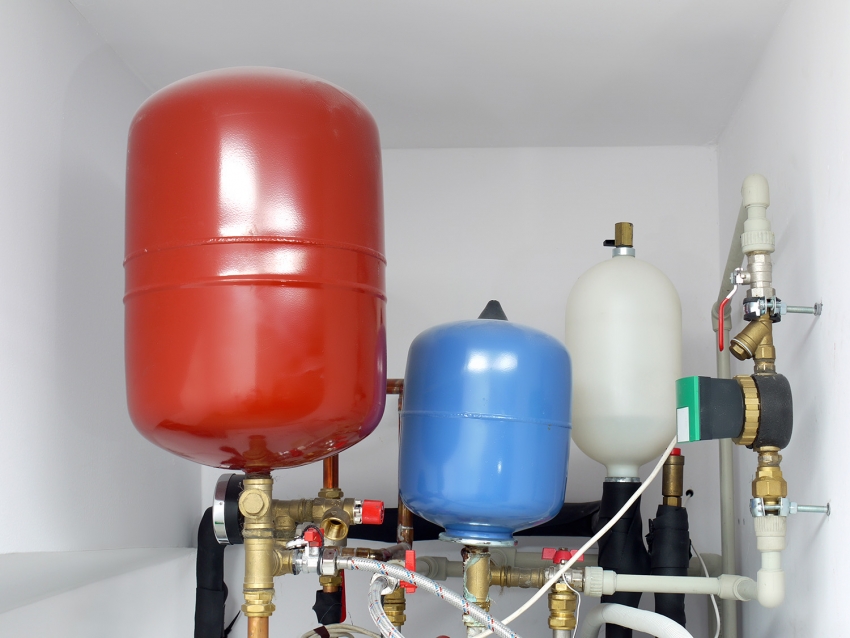
The use of water as a heat carrier requires the installation of high-quality thermal insulation of pipes and other elements of the system
If we talk about which liquid for heating systems is suitable according to these criteria, then water is undoubtedly the best option. Its heat capacity is quite sufficient, and it does not pose any threat to pipes or humans. But this solution has one serious drawback - it easily freezes.
Therefore, before pouring water into the heating system, you need to understand that if it freezes, it will expand and simply break pipes and radiators. That is why the use of antifreeze for heating your home is considered mandatory. Under the influence of low temperatures, the liquid somewhat loses its fluidity, but at the same time it does not harm the equipment.
So the choice of coolant must be approached with all responsibility. The use of ordinary water is allowed, but only if you are able to ensure constant monitoring of the system and monitor its performance. If we are talking about arranging a country house, which periodically remains unattended, and the heating system may be turned off for some time, then adding antifreeze can be considered mandatory. In this case, it is better to buy propylene glycol coolant.
Useful advice! When deciding how to fill the heating system, you should also pay attention to the risks of a power outage. If the house is located in a region where such shutdowns are the norm, then it is also necessary to use a special antifreeze.
What coolant is best used in the heating system: features of using water
If we talk about water as a liquid used to transfer heat from a source to radiators, then this option can be confidently called ideal. Its heat capacity and fluidity are extremely high, so that heat can be delivered to the radiator in the required amount without any problems.
Many are interested in the question of what water is best to fill in the heating system. In this case, the answer is simple - ordinary tap water is suitable for closed heating systems. Of course, its composition can hardly be called ideal, and one way or another, it contains salts, as well as a certain amount of mechanical impurities that can settle on the equipment. However, this process will happen only once, and given that ordinary water is able to circulate regularly through the heating system for years and does not require replacement, the harm will be insignificant. Simply put, the amount of precipitation that appears in the system simply will not be able to somehow affect its operation.
You need to pay more attention to the choice of water for closed-type systems, since during the operation of the system, partial evaporation of the liquid occurs, and the water has to be added periodically. As a result, the concentration of salts and impurities will constantly increase, which, accordingly, will lead to the accumulation of more precipitation on the inner surface of the equipment. Therefore, for systems that include an expansion tank, distilled or purified water must be used.
Of course, constantly adding distilled water to the system is a rather expensive pleasure, and it is far from always available at hand in the required volume. Therefore, filtered water can be used as an alternative.
Important! The most negative impact on the heating system is produced by hardness salts and iron contained in water. All kinds of mechanical impurities are not useful either. Therefore, special attention should be paid to this during the cleaning process.
What to do before pouring water into the heating system
You can prepare water for use yourself. It will take some time, but it will save you the trouble of spending money on buying distilled water. Here are some simple guidelines:
- first of all, the required amount of water must be collected in a container of a suitable volume and defended. This will allow most of the iron to settle to the bottom;
- after the water has settled, it must be carefully poured into another container and boiled without covering it with a lid. Thus, magnesium and potassium salts are eliminated.
Water prepared with these simple tips can already be considered sufficiently prepared for use. Of course, it is quite tedious to carry out such procedures every time, so you can add distilled or filtered water, but as an initial filling, this option is great.
What are antifreezes, which one is better to choose, features of their use
Speaking about the use of antifreeze for heating systems, you need to understand what it is and which antifreeze to choose. These are aqueous solutions of polyhydric alcohols, although not so long ago a new type of antifreeze appeared, for which glycerin was used as a basis. In order to figure out which option is best to make a choice, let's take a closer look at the characteristics and properties of each of them.
Varieties of antifreeze for the heating system of a country house
To date, the manufacture of antifreeze is based on the use of two substances: propylene glycol and ethylene glycol. The first option is more expensive, but at the same time it is completely safe, even if you use it internally. But it has another serious drawback - it can lose fluidity at low temperatures, to which ethylene glycol would not react.
Important! Ethylene glycol is extremely toxic and can cause serious poisoning even with its own vapors, not to mention direct contact.
It is interesting that, despite all the dangers of using ethylene glycol, it is preferred much more often, which is most likely due to its lower cost.
Antifreezes made on the basis of ethylene glycol are also distinguished by the fact that they are chemically active, have increased fluidity and are capable of foaming. And if foaming can still be fought with the help of special additives, then the increased level of fluidity cannot be adjusted. And given that the substance is also toxic, this significantly increases the risks of using such antifreeze.
Summing up, we can say that if it is possible to use propylene glycol coolant for the heating system, then it should be used. Therefore, ethylene glycol will surely flow wherever possible. And its toxic vapors can provoke serious poisoning and further health problems.
Important! If the propylene glycol-based coolant is completely safe, then when working with ethylene glycol, it is imperative to use personal protective equipment: a respirator, goggles and clothes that can be thrown away. This is necessary because when it comes into contact with fabric, the substance remains toxic and cannot be completely removed from the surface.
What coolant for heating systems to buy: the most popular brands on the market
Before buying a coolant, you need to familiarize yourself with the offers on the market and compare their characteristics. Let's consider several of the most popular options and their properties.
Popular coolants and their properties:
| Name | Active substance | Working / crystallization / decomposition temperature, ° С | Service life, years | Can I dilute with water | Price, rub. / 10 kg |
| Heat carrier Dixis 65 | monoethyleglycol | 65-95/-66/111 | 10 | Yes | 850 |
| Heat carrier Warm House Eco | propylene glycol | 30-106/-30/170 | 5 | Yes | 1050 |
| Heat carrier Thermagent Eco 30 | ethylene glycol | 20-90/30/170 | 10 | no | 650 |
| Heat carrier Teplocom | glycerol | 30-105/-/- | 8 | no | 780 |
| Heat carrier PRIMOCLIMA ANTIFROST | propylene glycol | 30-106/-30/120 | 5 | Yes | 762 |
Useful advice!Another extremely popular option is the heat carrier Teply Dom 65. This option can be considered universal, since its characteristics and level of safety fully meet all requirements.
Another important drawback of heat transfer fluids based on ethylene glycol is that they react extremely poorly to overheating, which, moreover, occurs at rather low temperatures. That is, already at + 70 ° C, a huge amount of sediment appears, which immediately settles on the surface of the heating devices. Such deposits have a negative effect on heat transfer, which again leads to overheating. It is for this reason that antifreeze is never used for solid fuel boilers.
Important! Ethylene glycol-based heat transfer fluid can be damaging to pipes, especially if they are galvanized. Therefore, when acquiring such a substance, it is worth thinking about the safety of the elements of the system.
As for propylene glycol, its chemical composition is completely neutral, and therefore the coolants made on its basis react little with other substances. Overheating occurs when exposed to much higher temperatures, and its consequences are not so unpleasant.
Related article:
Heating options for a country house: choosing a boiler
Boiler selection by power and fuel type. Advantages and disadvantages of water heating from a wood-burning stove. Features of solid fuel, gas, electrical units: description and prices.
Glycerin-based antifreeze appeared only at the end of the last century. According to its characteristics, it represents a cross between the first two options. It does not pose any danger to human health, but as far as its effect on the gaskets is concerned, some difficulties arise here. Glycerine coolants react poorly to overheating.
Filling the heating system with antifreeze: features of use
It is worth thinking about what kind of coolant will be used even at the design stage of the system. This is due to the fact that antifreeze for heating has a low heat capacity. If the system was originally intended for water, then pouring antifreeze into it, you may encounter the following problems:
- the received power will not be enough and as a result it will be cold in the house. This is explained by the same low thermal conductivity. It is possible to solve this problem by installing a circulating sediment of greater power, and thereby increasing the speed of movement of the coolant through the system. Well, if you already act according to all the rules, then it would be nice to increase the number of sections in the radiators;
- before pouring the coolant into a closed heating system, you need to make sure that the volume of the expansion tank is sufficient. This is due to the fact that water and antifreeze expand in different ways, and if a certain volume may be enough for water, then not for antifreeze. As a simple solution to the problem, you can simply install additional capacity;
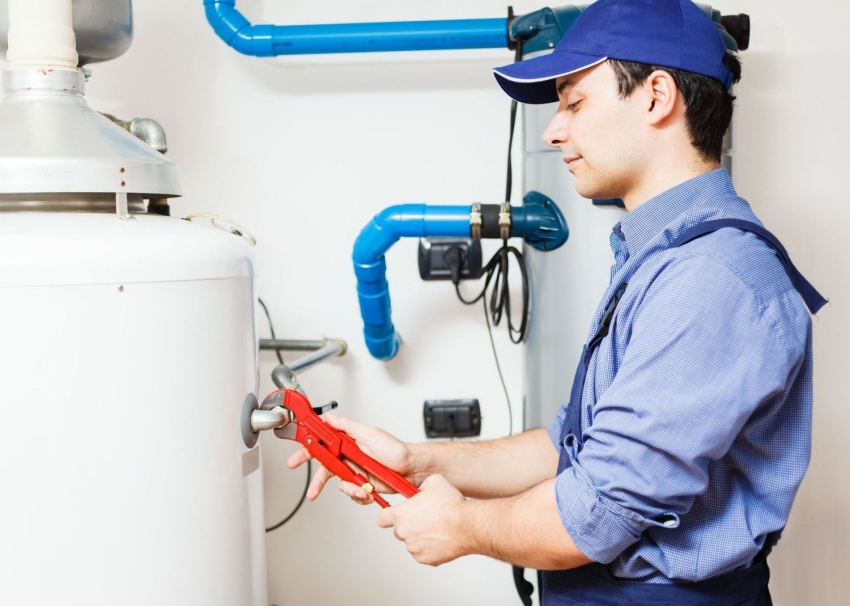
When choosing a coolant for a closed heating system, it is important to consider the volume of the expansion tank
- Before using antifreeze based on ethylene glycol or glycerin, you need to take care of the presence of appropriate gaskets. The thing is that chemically active substances will easily destroy ordinary rubber, which will lead to leaks. Therefore, before pouring antifreeze, all gaskets must be replaced with Teflon or paronite.
Thus, once again we have to make sure that the best coolant is water. It costs several times cheaper, and all its characteristics meet the requirements. But in cases where it is impossible to use ordinary water, antifreezes still help out.
Important!In no case should you try to pour car antifreeze into the heating system. For this purpose, only special heating fluids can be used.
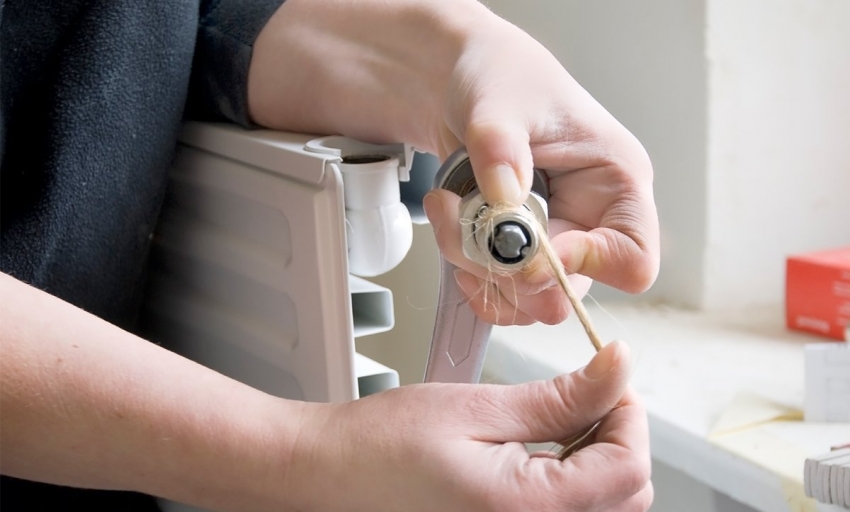
When choosing a glycerine coolant for the heating system, it is necessary to replace the gaskets with Teflon or paronite
As for the choice, the use of propylene glycol coolant is many times preferable. And for greater convenience, dyes are added to antifreezes, which allow customers to more easily distinguish between compositions. Ethylene are usually colored red or pink, and propylene ones are green. If the antifreeze is blue, then it is made on the basis of glycerin. In the process of use, the dye may fade or completely disappear under the influence of temperature, but this will not affect the quality of the coolant itself.
Filling the heating system with a coolant with your own hands: rules and recommendations
The question of how to pour antifreeze into an open heating system does not arise so often. This can be done as simply as possible using an expansion tank. So the coolant must be poured into the tank, and under the influence of the force of gravity, it will itself spread throughout the entire system. In this case, it is important that during the filling of the coolant, all air vents are open.
It is somewhat more difficult to work with closed-type systems. Various refueling methods are used for them. So, you can fill in the coolant by gravity, without using any technique. Sometimes a small submerged sediment is used for this, or it is specially designed for this purpose, with the help of which the pressure test of the system is designed. Let's consider each of the options, its advantages, disadvantages and features:
- Gravity pouring. On the one hand, this is a simple method, since it does not require the purchase and use of any special equipment. But at the same time, this process will take a lot of time, since it will take quite a long time to "squeeze" the air out of the system. And the necessary pressure will be accumulated over a long period. First of all, it is necessary to find the highest point of the system and remove the gas outlet present there. During filling, the lowest point at which the coolant drain valve is located must be open. As soon as it leaks, it means that the system is full.
- Filling using a submersible pump implies the use of such a low-power device like the Kid. It must be connected to the lowest point in the system (not to the drain point). The liquid is poured into a container and one end of the pump is lowered into it. It is important that the pump does not "swallow" air during operation.
- Filling using a crimping pump is carried out in almost the same way as in the previous case. Only here a special manual sediment is used, which allows you to pump fluid into the system.
Useful advice! It is not necessary to purchase a pump for pressure testing. It is quite possible to rent it from a company specializing in this, which usually also sells equipment for heating and plumbing.
Rules for commercial metering of thermal energy of a heat carrier: what is it?
Today, almost everything related to the individual construction and arrangement of residential buildings is regulated by law. This case is no exception, since there are special rules for accounting for heat energy and coolant, which are formulated in the Decree of the Government of the Russian Federation of November 18, 2013.
In general, the methodology for the implementation of commercial metering of thermal energy of the coolant is an interesting question, although it is quite complicated for an ordinary user. But if you want to figure out how certain calculations are made and what the norms used in the future are made of, you can read the documentation on this topic.
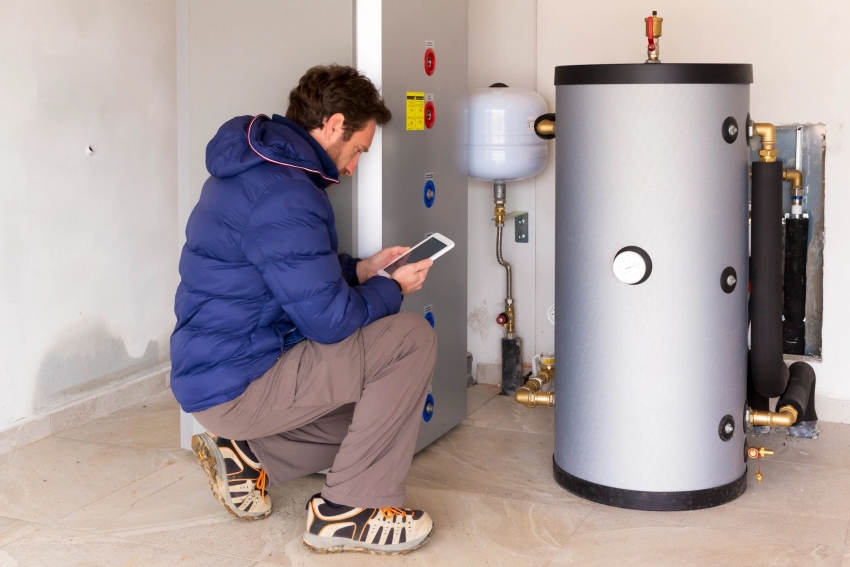
According to the rules of commercial metering of thermal energy of the coolant, admission to operation of metering units is carried out by a representative of the energy supplying organization
Important! As a basis for calculations, a formula is used. The flow rate of the coolant is calculated based on what natural heat losses will be in a particular room, and what the temperature of the radiators should be in order to maintain a comfortable temperature in the room.
Summing up, it is worth noting that you can buy a coolant for the heating system of a country house, based on various criteria and factors. For many, the decisive factor is the price of the coolant for the heating system, while someone pays more attention to the issue of safety and efficiency. In any case, before buying, it is worth weighing all the arguments in favor of a particular decision.
Temperature graph of the coolant: requirements and standards
For a coolant, the temperature in the heating system is indicated based on the indicators obtained when the liquid has already passed a full circle and returns to the boiler. According to the standards, the average daily temperature in the room should not be less than + 8 ° С for three days.
In addition, in addition to the norms that have been provided, the minimum heating in the boiler must be taken into account. It is very important that the water temperature does not drop below the dew point. Usually this indicator fluctuates between 60-70 ° С, although some deviations associated with the characteristics of the fuel used, as well as the unit itself, are permissible. If for any reason this rule is violated, then condensation will form, which will negatively affect the operating life of the device.
Interesting! The temperature schedule for supplying the coolant to the heating system provides that in houses where people live, the air temperature should not fall below 20 ° C. For industrial buildings, this figure is slightly lower - 16 ° C.
In addition, in the process of heating the coolant, such a factor as the air temperature outside the window must be taken into account. That is, if it is very cold outside and the temperature has dropped below -20 ° C, then the coolant should be heated more.
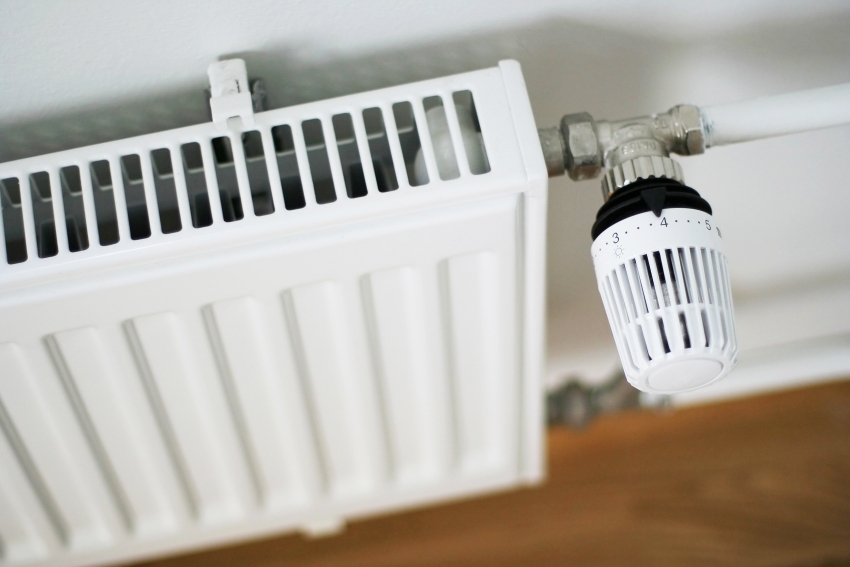
In order for the heating system to work properly and maintain a comfortable temperature in the house, it is necessary to choose the right coolant according to the operational characteristics of the equipment
At the same time, the temperature schedule of the coolant, the limits of which are defined as 30-90 ° C, should not be violated, since this can lead to the fact that the paintwork of the equipment will decompose. And sanitary standards prohibit exceeding these indicators.
Thus, when choosing a coolant for electrode heating boilers and other systems, many factors must be taken into account.Of course, the price is an important criterion, and for many it is it that is decisive, but do not forget about safety. If possible, it is better not to save money, and give preference to the best heat carriers, which are also characterized by high efficiency.
